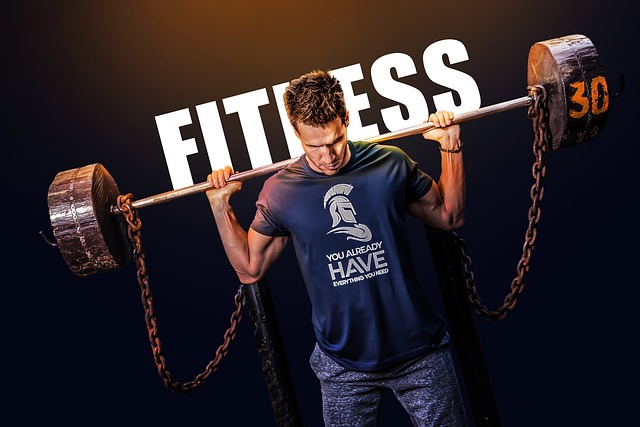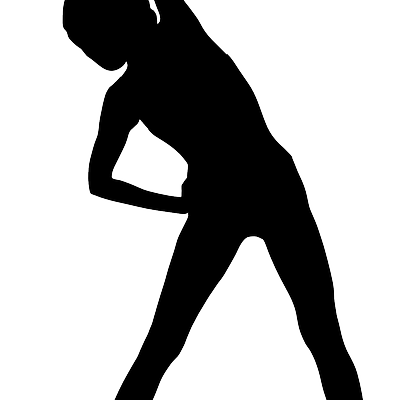Warming up your body with some warm-up exercises before your workout can prevent you from getting injured and get the most out of your workout. However, much of what we’ve been taught about warming up contradicts what our bodies actually require before a workout.
It is vital to ensure stability throughout your movement during a proper warm-up to avoid injuries. There are various extremely beneficial motions you may perform to properly prepare your body.
Traditional stretching exercises, such as reaching for your toes, may not be optimum if not paired with other movements. These static stretches instruct your body to relax the muscles that safeguard your joints. This message isn’t always beneficial, especially when you require stabilizing mechanisms during intense lifting sessions.
Purpose of Warm-up Exercises
A warm-up is commonly thought of as a way to get the blood circulating while also making the muscles and tendons more supple. A warm-up should also engage your central nervous system (CNS), preparing it for the job ahead. One effective method is to perform dynamic movements comparable to those you would perform during your workout.
So, while deciding which exercises to undertake during your warm-up, choose those that are most similar to the movements you will be doing during your training session. Bodyweight squats, for example, are a fantastic warm-up movement for barbell squats, whereas banded rows will help you to get your back muscles ready before pulling exercises like sled pull.

These types of vigorous motions will prime your CNS for the workout while also improving your range of motion and stability. Remember that each person’s body and needs vary in terms of the range of motion, joint stability, and mobility.
When conducting warm-up activities, pay attention to your body—nothing should be uncomfortable. Aim for three to four warm-up motions, or more if you choose. This should just take you 5 to 10 minutes.
Here are some stretching exercises you should try before a workout.
- Bodyweight Squats
- 90-90
- Bird Dog
- Banded Row
- Inchworms
- Angels on the wall
- Lunge combined with hip opener
- Gate Operator
- Arm circles with Reach
- Prone Cobra
Bodyweight Squats
Warming up the glutes and hip flexor muscles, as well as the quadriceps, abs, calves, and hamstrings, is aided by bodyweight squats. Bodyweight squats are a fantastic warm-up if you intend to execute any weighted squats during your workout. Squats, as a compound full-body activity, assist in warming up several muscles at once and prepare your central nervous system for work.
Instructions in Steps
- Position your feet hip-width apart; toes pointed straight ahead or slightly outward.
- Put your hands on your hips or out in front of you.
- Hinge your hips back, bend your knees, and keep your weight on your heels. Lower your hips to the ground. Keep your back straight.
- Lower yourself till you feel a stretch in your quadriceps. Pause for one count before pushing through your heels and stretching your hips back to the beginning position.
Rep 10 times more.
90-90
Through internal and external rotation, the 90-90 movement will help open up the hips. While this may appear to be a passive stretch, it is actually an aggressive stretch of the gluteus muscles.
If you feel any pinching pain in this position, cease immediately and consult a specialist.
Instructions in Steps
- Sit on the ground. Your right leg should be 90 degrees in front of you, and your left leg 90 degrees behind you.
- You should be able to sit up straight and tall. If you raise your left arm straight, your left knee and arm should line up, as should your hip and shoulder.
- To support your posture, place your right hand alongside you, palm down, fingers pointing behind you.
- Pay close attention to your right (front) leg’s knee and ankle. Stay in this is difficult as it is.
- Lean forward and keep your chest up, hovering over your right knee. Instead of letting your knee rise off the ground, intentionally drive the knee and ankle into the ground.
- You should feel a significant stretch. Hold for 5 seconds while actively pushing your knee and ankle into the ground. Return to an upright position.
Repeat the movement 5 times before switching legs and doing it again on the opposite side.
Bird Dog
The bird dog workout is great for getting your core and lower back in shape. In preparation for your workout, this technique will wake up the core muscles that support your spine. This movement will also benefit your glutes and hip flexors.
Instructions in Steps
- Get down on all fours on the ground, knees under hips, wrists under shoulders.
- Contract your abs and maintain a neutral spine by pushing your shoulder blades down and back against your hips.
- Raise and lengthen your left leg until your back is straight and parallel to the floor while raising and straightening your right arm until it is parallel to the floor. Your head and shoulders should be upright and aligned.
- Lower your arm and leg slowly back to the beginning position and switch sides.
Repeat on each side 10 times.
Banded Row
Movements towards the rear of your body can be difficult to feel appropriate. The mind-muscle link is critical for good form and performance. A banded row will assist you in activating your back muscles. Warming up your shoulder joints and shoulder blades is another benefit of banded rows.
Instructions in Steps
- Place a resistance band under your feet and grasp the grips. Have your feet shoulder-width apart, with your toes slightly pointing out.
- Maintain a small bend in your knees and a forward bend in your hips. Maintain a flat back and an engaged core.
- Pull the resistance band handles back, starting with your elbows and pushing your shoulder blades closer together. Hold the contraction in your upper back for one count.
- Slowly return to the starting position.
Rep 10 times more.
Inchworms

The inchworm workout strengthens your front body muscles while stretching your back body muscles. This action will involve your entire body, making it ideal for an athletic warm-up. By stabilizing muscles in your shoulders, hips, glutes, quadriceps, and core will begin to fire up, preparing your body for your workout.
Instructions in Steps
- Take a natural stance and stand tall.
- Hinge from your hips and, if possible, touch the floor with your fingertips or palms.
- Walk your hands as far forward as you can without letting your hips drop, with your legs straight.
- You should finish in a plank position, with your hands under your shoulders.
- Slowly return your hands to your feet and straighten to your starting position.
Rep 10 times more.
Click Here to Read More on warm-up exercises

